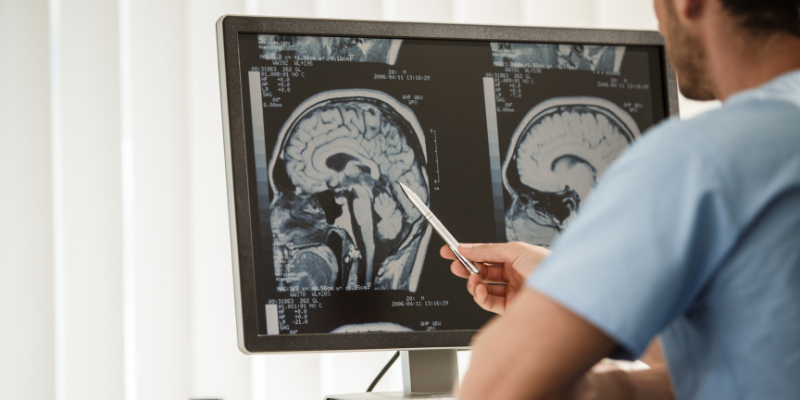What Are the Major Risk Factors for Pseudotumor Cerebri?
Also known as idiopathic intracranial hypertension or IIH for short, the disorder is characterized by having increased pressure in the skull. This condition, although termed pseudotumor cerebri, is not an actual tumor but may comprise the effects of a brain tumor. Some effects include headaches, visual disturbances, and increased intracranial pressure. Therefore, being aware of the condition's risk factors will play an essential role in its early detection and proper management. This article describes some of the risk factors involved with pseudotumor cerebri and how those risk factors lead to the disease.
Obesity: A Major Risk Factor for Pseudotumor Cerebri
Obesity is the primary risk factor for pseudotumor cerebri, especially in women of childbearing age. High body mass index and central obesity (in this case, abdominal fat deposition) have been strongly linked with intracranial pressure. Obese patients are more likely to hold fluid in their bodies, which increases intracranial pressure. Studies reveal that obese and overweight patients have a higher propensity to develop pseudotumor cerebri. Weight loss improves the symptoms in some patients and facilitates the management of the disease condition.

Gender and Age: Role of Hormonal Influence
Pseudotumor cerebri mainly affects women, especially those in the 20 to 40-year-old age group. Susceptibility has been increased in women by fluctuations in hormone levels. Although men can suffer from this condition, its incidence is much less among men compared to women. Other predisposing factors to this condition include an age range in which hormonal variation is more apparent. This is a possible direction of hormonal influence in the pathogenesis of heightened intracranial pressure.
Medications and Drug Use: How They Affect Intracranial Pressure
Some medications have been associated with increasing a patient's risk of developing pseudotumor cerebri. These include corticosteroids, oral contraceptives, and some types of antibiotics that may increase intracranial pressure. Other drugs that lead to the development of pseudotumor cerebri are tetracycline antibiotics, growth hormone therapies, and even massive doses of vitamin A. Such patients should be observed for any symptoms of increased intracranial pressure. Treatment. If you are on drugs known to induce IIH, then you have to discuss it with your doctor and seek an alternative.
Pathological Disorders and Association with IIH and Other Diseases
Various medical conditions may predispose one to developing pseudotumor cerebri. Some of the common ones include sleep apnea, and chronic kidney disease. Most individuals with PCOS, which is characterized by hormonal imbalance, are also more likely to suffer from IIH because the disorder is highly related to obesity and hormonal imbalances. Further, patients with sleep apnea can also be associated with increased intracranial tension due to variations in the breathing pattern and oxygen. All the other pathologies that provoke pseudotumor cerebri would also be essential in reducing its potential risk through treatment.

Genetics: Hereditary Elements and Contribution to the Condition
Although the direct genetic cause and factors remain unknown, most studies indicate genetic involvement in the pathological condition. People with relatives who have also suffered from similar conditions, such as pseudotumor cerebri, are primarily at risk of developing IIH. This inherited predisposition may affect the bodily processing of various hormones, fluid balance regulation, or pressure regulation inside the skull. Such studies on the genetic basis of pseudotumor cerebri are helping scientists identify potential hereditary factors that may contribute to the disease.
Obstructive Sleep Apnea and Its Relation with Intracranial Pressure
Obstructive sleep apnea is a medical condition characterized by momentary cessation of breathing during sleep. This disease is a risk factor for the development of pseudotumor cerebri as a result of hypoxemia and its consequent effects inside the body. OSA triggers episodic hypoxia in the sleeping body that low levels of oxygen could characterize. The episodic hypoxia could thus lead to elevated intracranial pressure and fluid retention. Patients suffering from sleep apnea who are having headaches, blurring of vision, or tinnitus should be considered to have pseudotumor cerebri.
Symptoms and Early Diagnosis: Precursory Symptoms
Early signs of pseudotumor cerebri must be recognized to diagnose IIH, which may also be treated early. Classical IIH symptoms include recurrent headache, visual disturbances, nausea, and ringing in the ears, known as tinnitus. As the disease advances, the symptoms may become more severe, including loss of vision, double vision, or bulging fontanel in infants. Early diagnosis will prevent complications in the long term, which can consist of permanent loss of vision. If any of these symptoms arise, seek immediate medical attention.
Conclusion
Pseudotumor cerebri is a condition that arises with multiple risk factors, including obesity, gender, certain medications, underlying medical conditions, and genetic factors. It is important to understand risk factors well to identify early diagnosis and prevention. Managing lifestyle risk factors, for example, a normal weight, minimizing medications that contribute to increased intracranial pressure, and working conditions such as sleep apnea, can prevent the development of pseudotumor cerebri in those considered at increased risk for developing IIH. Alertness and vigilant management with one's healthcare team will allow this population to understand their risk well and intervene accordingly if symptoms of IIH have begun to emerge.












